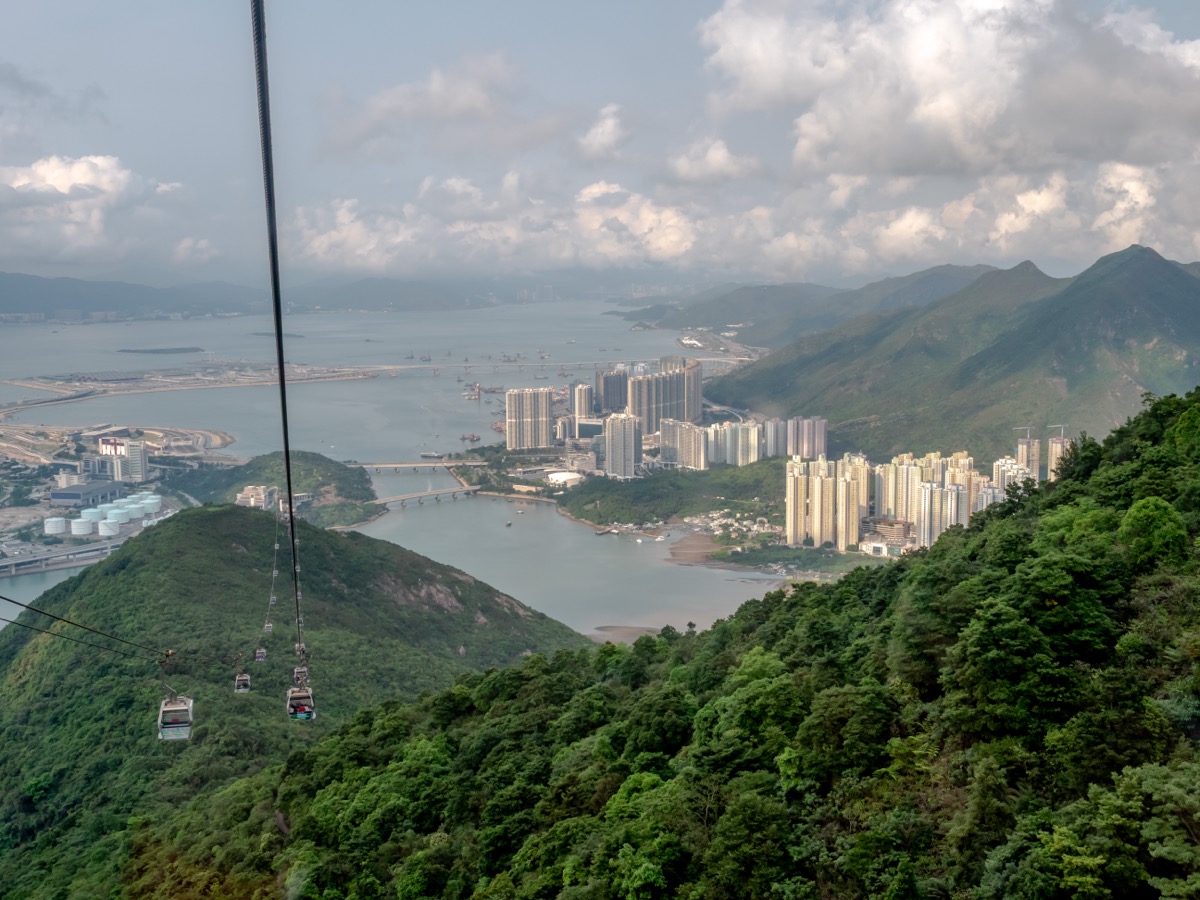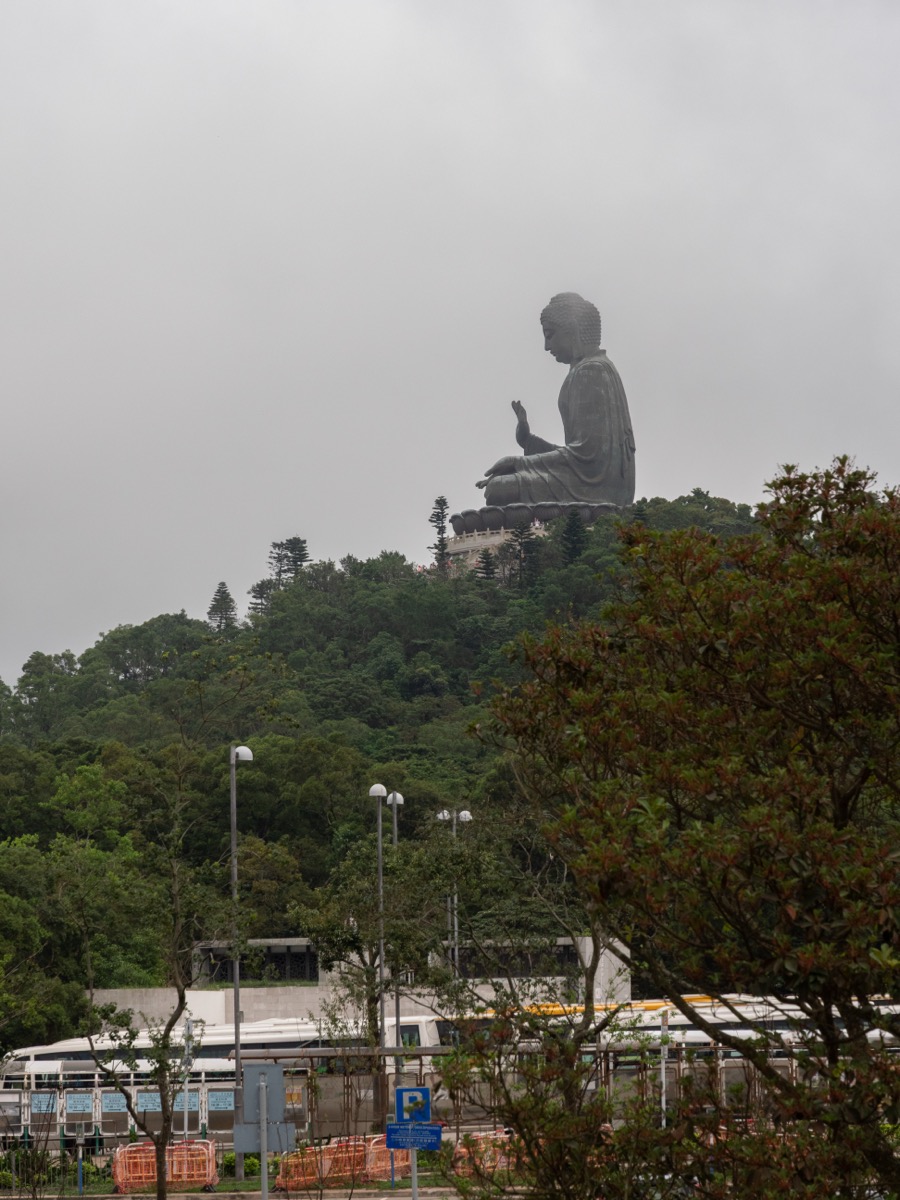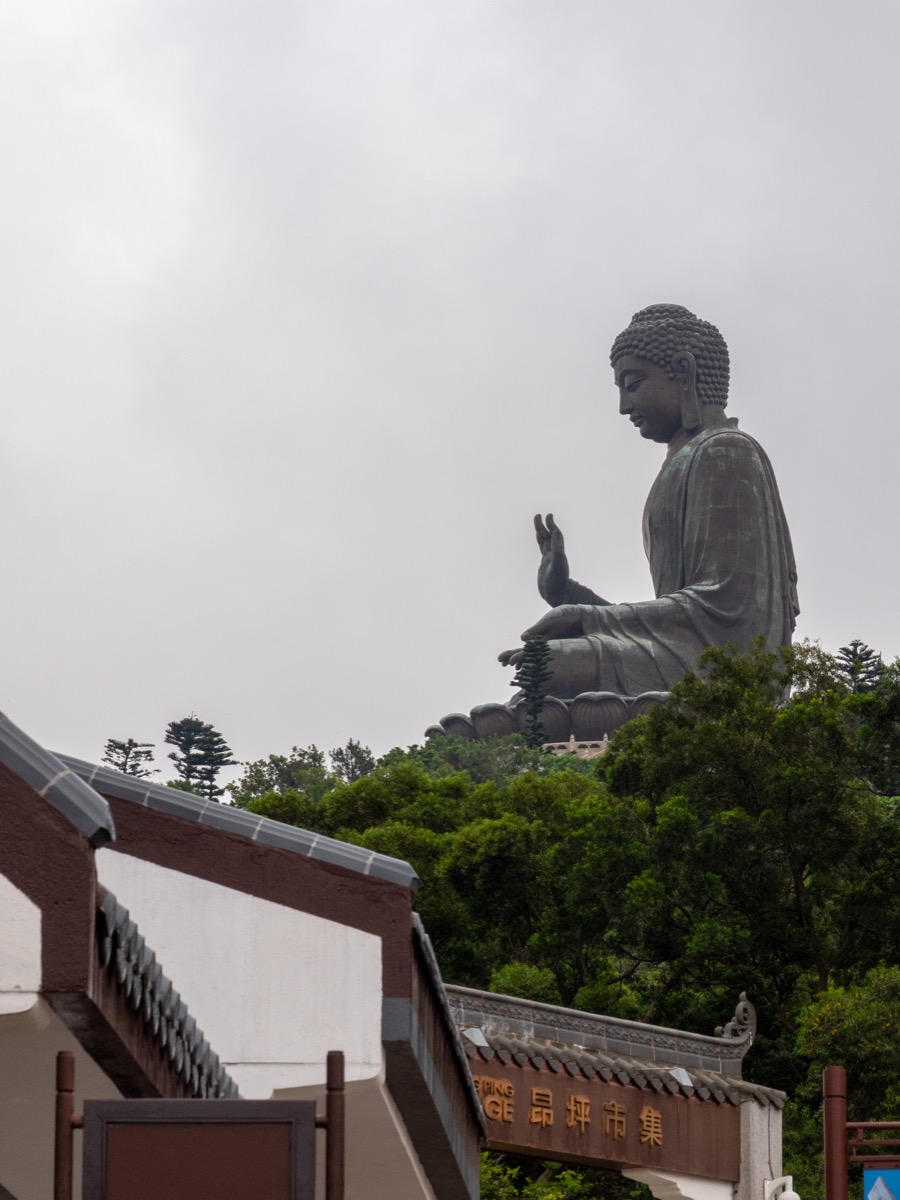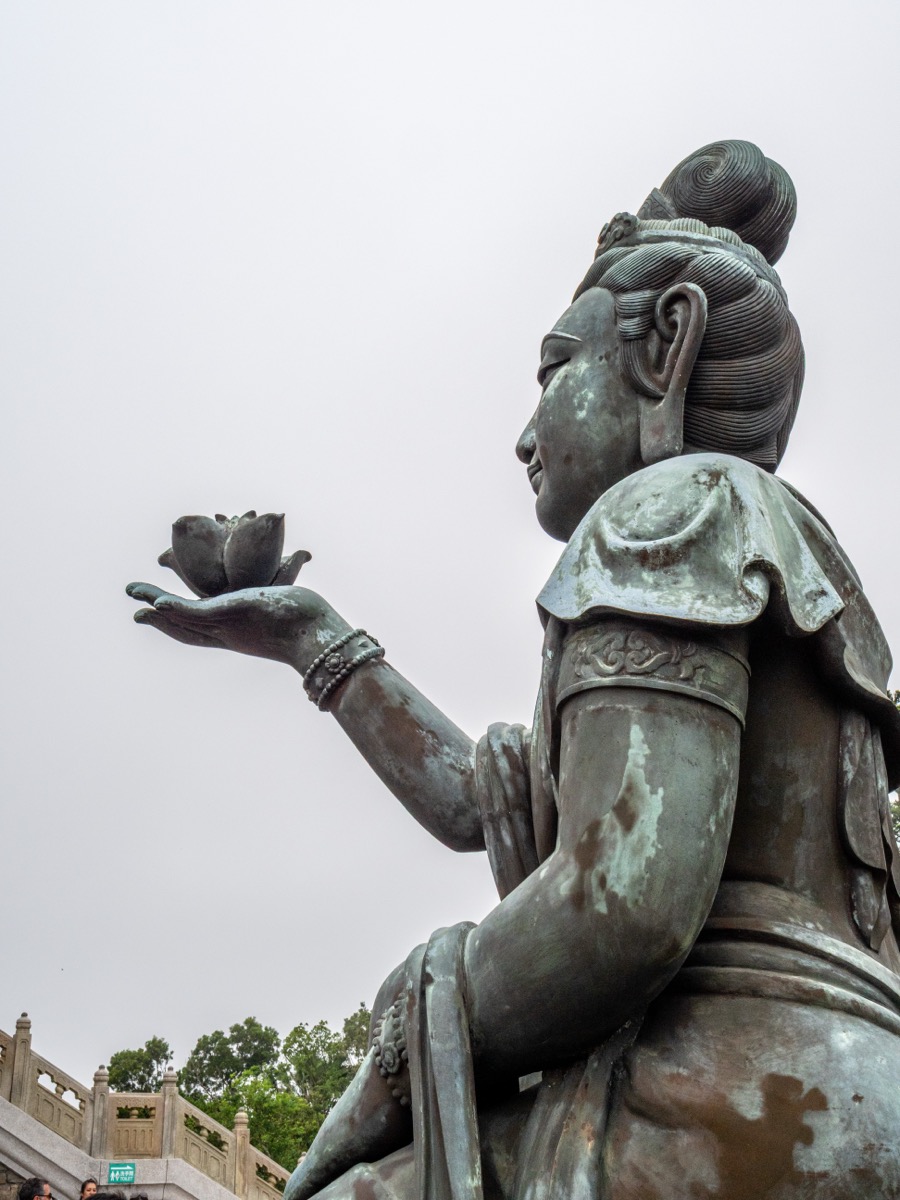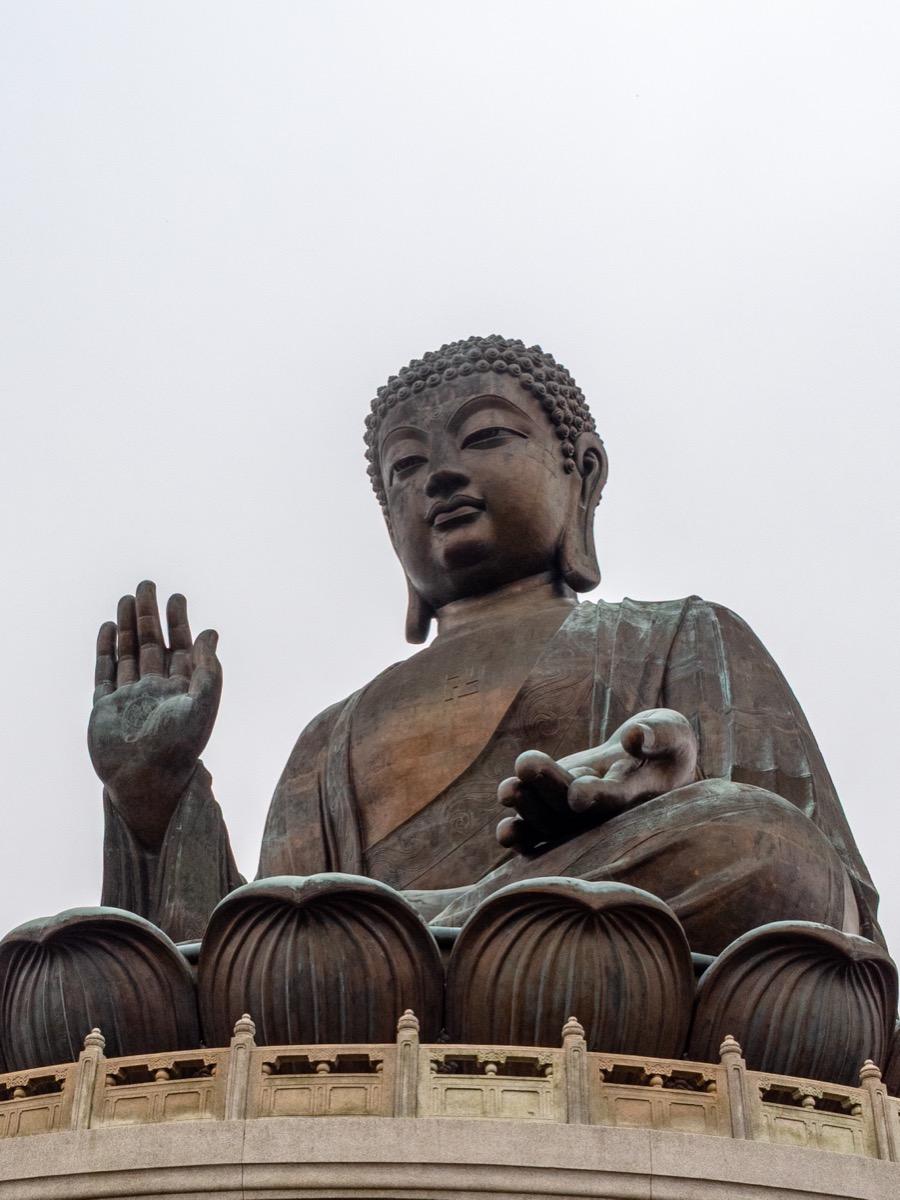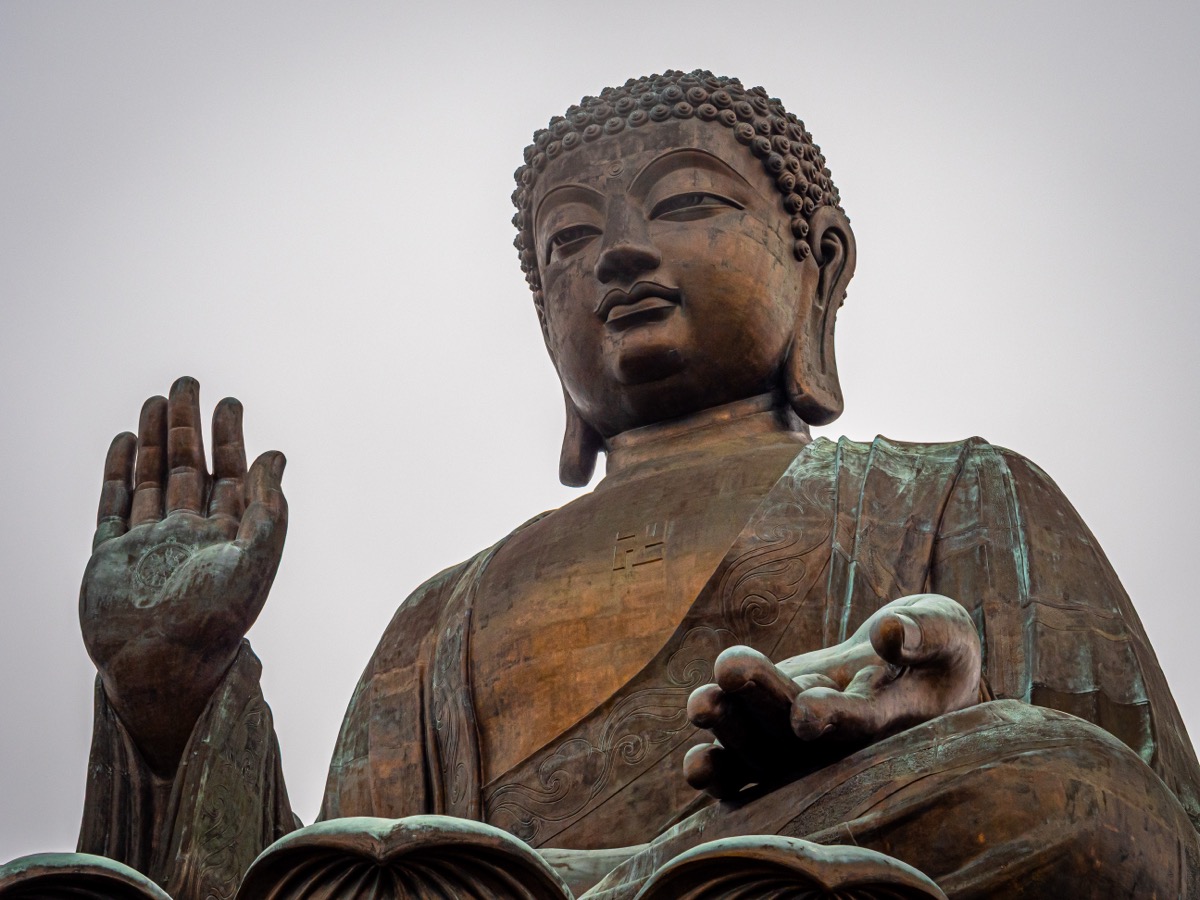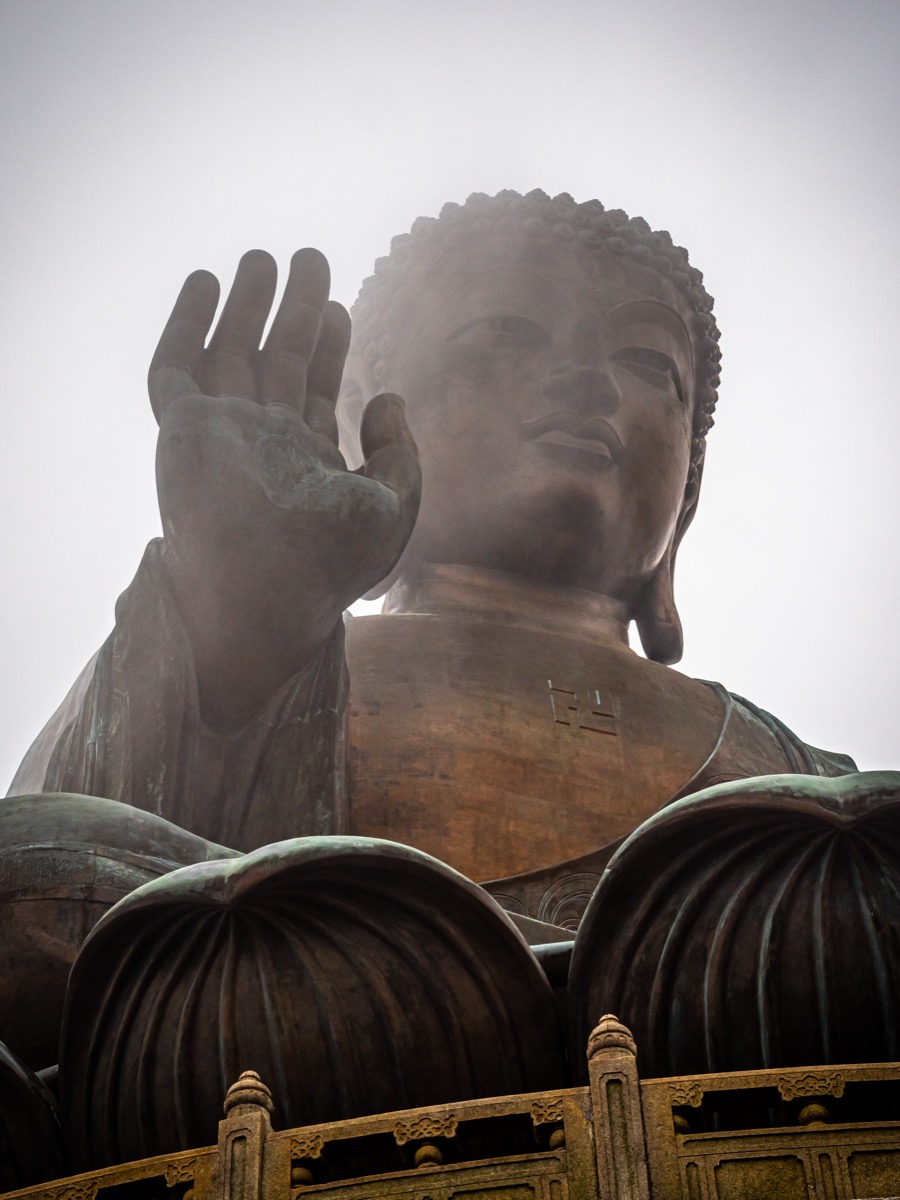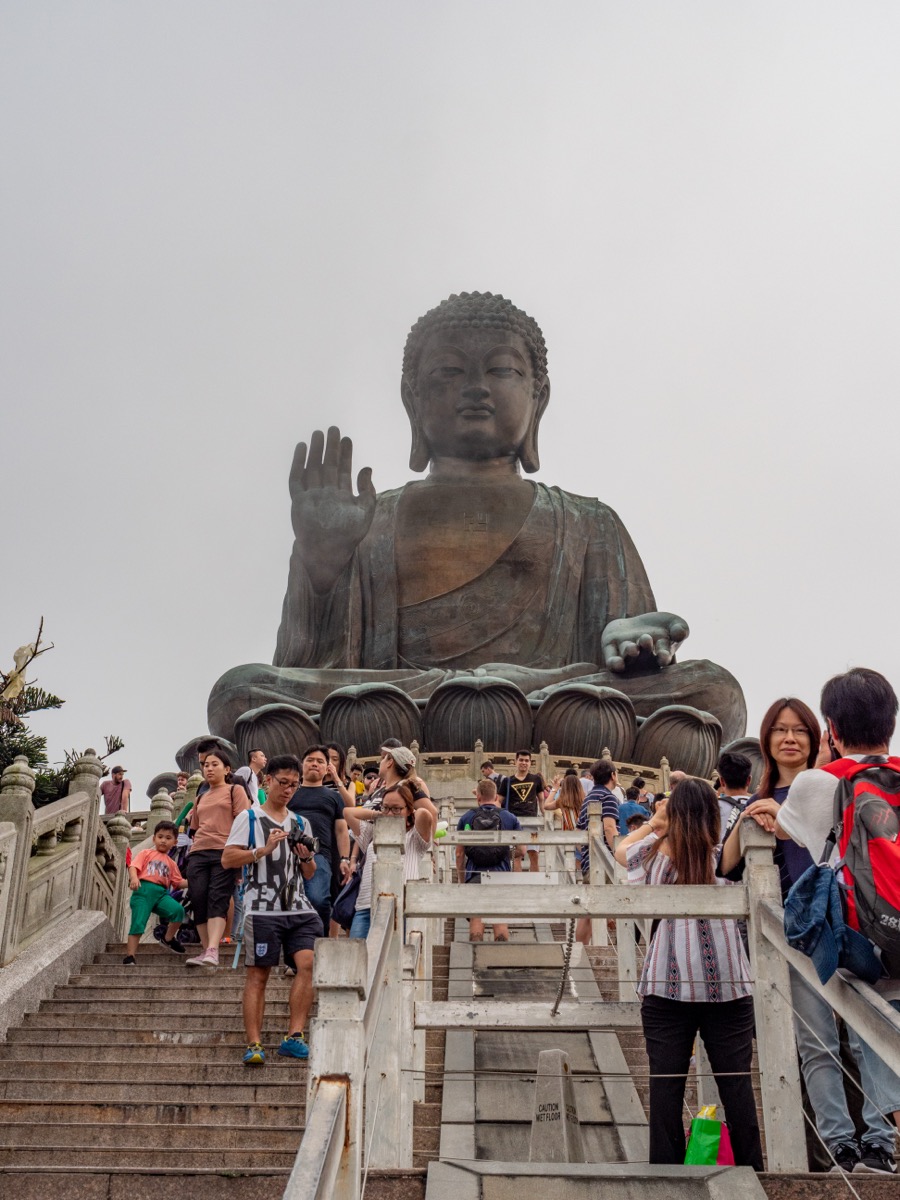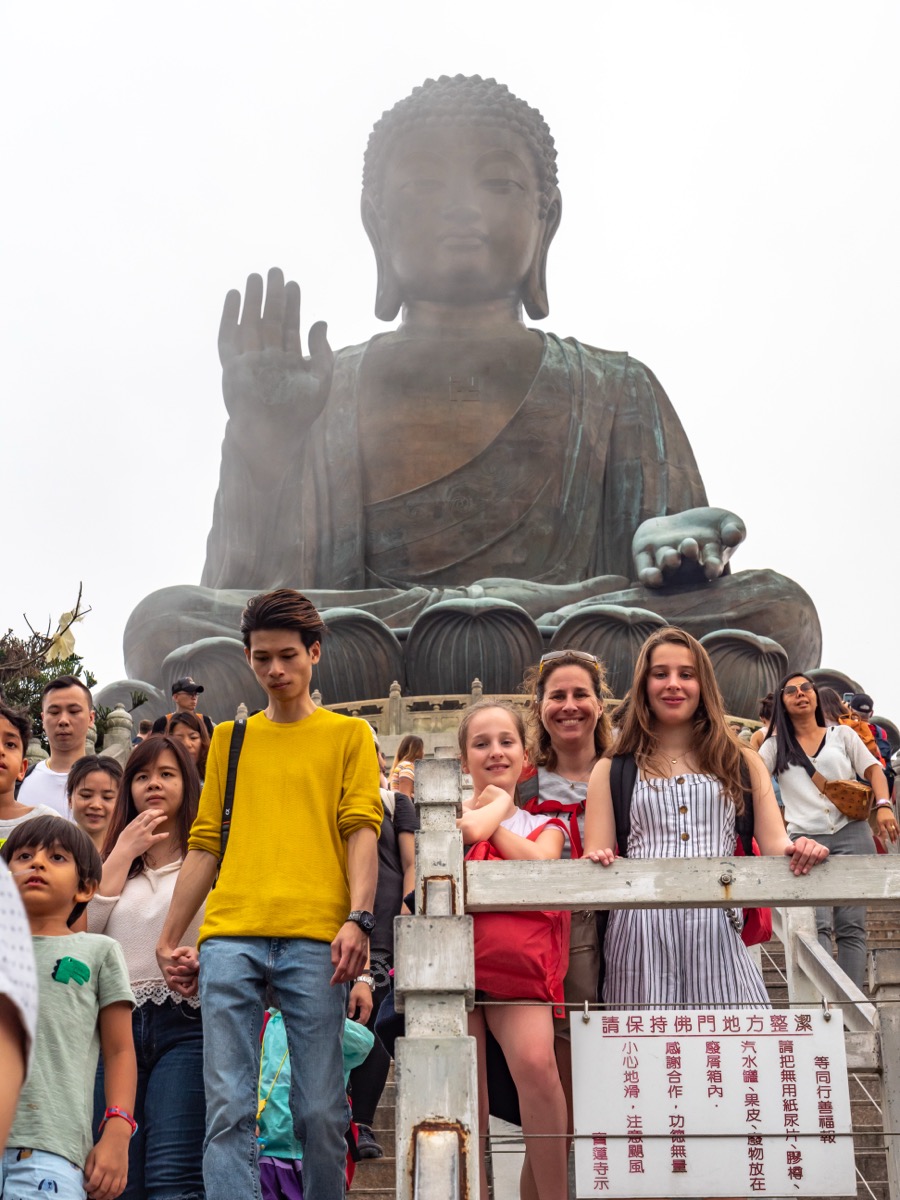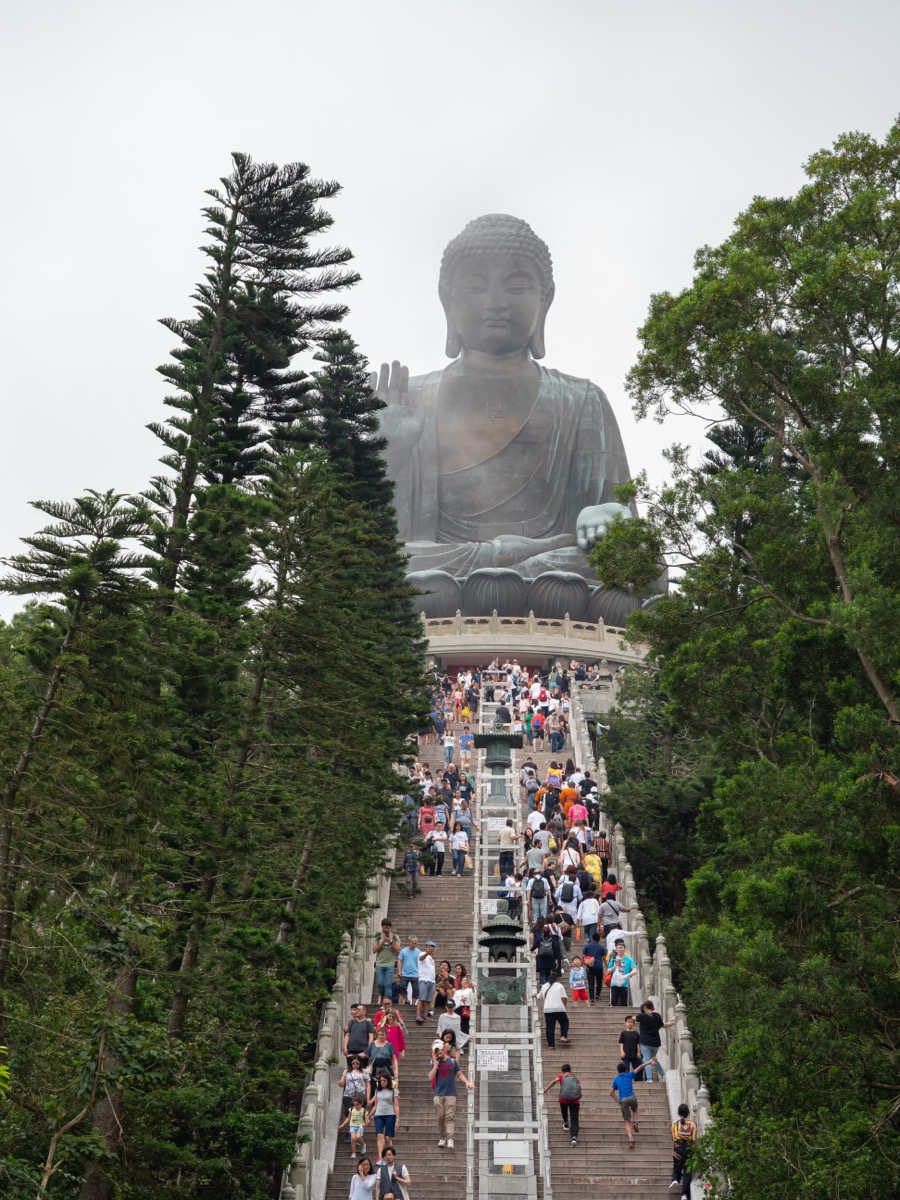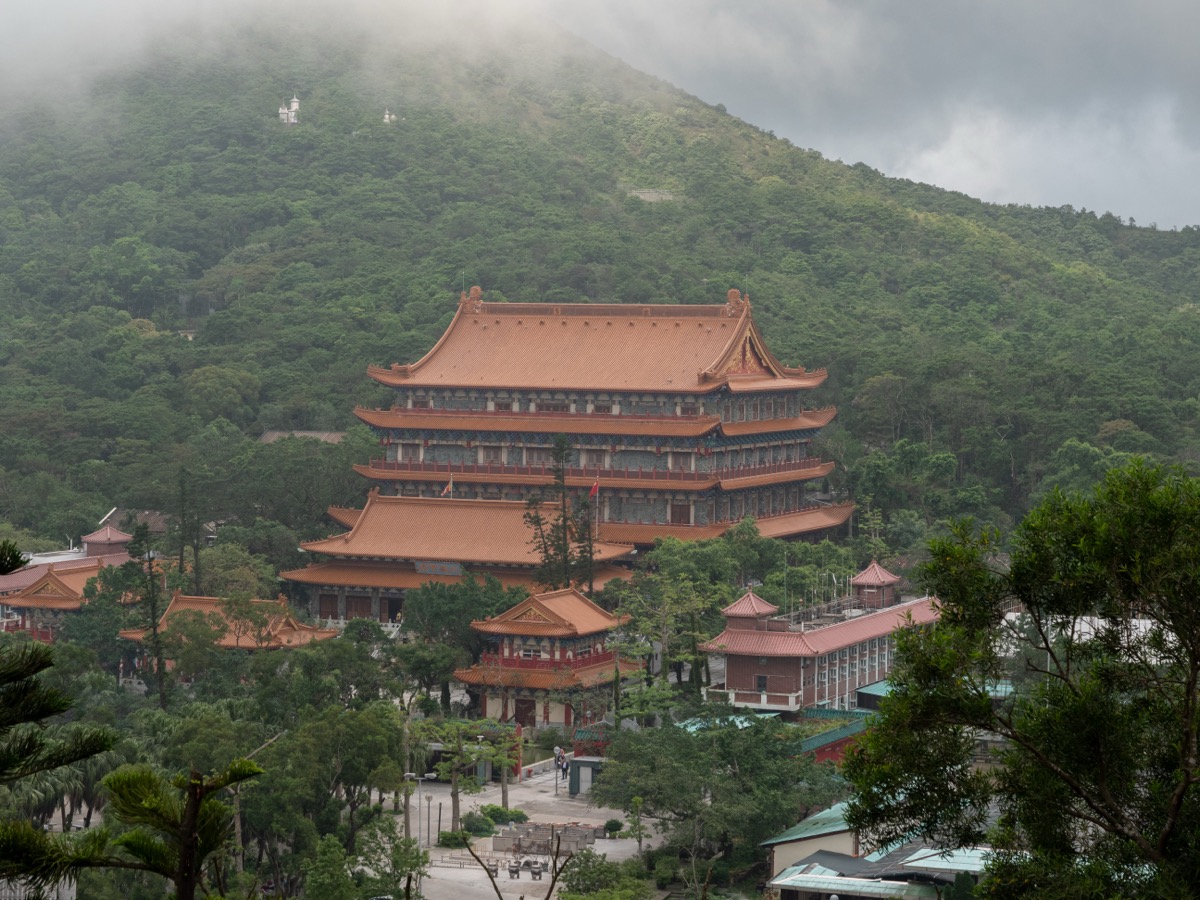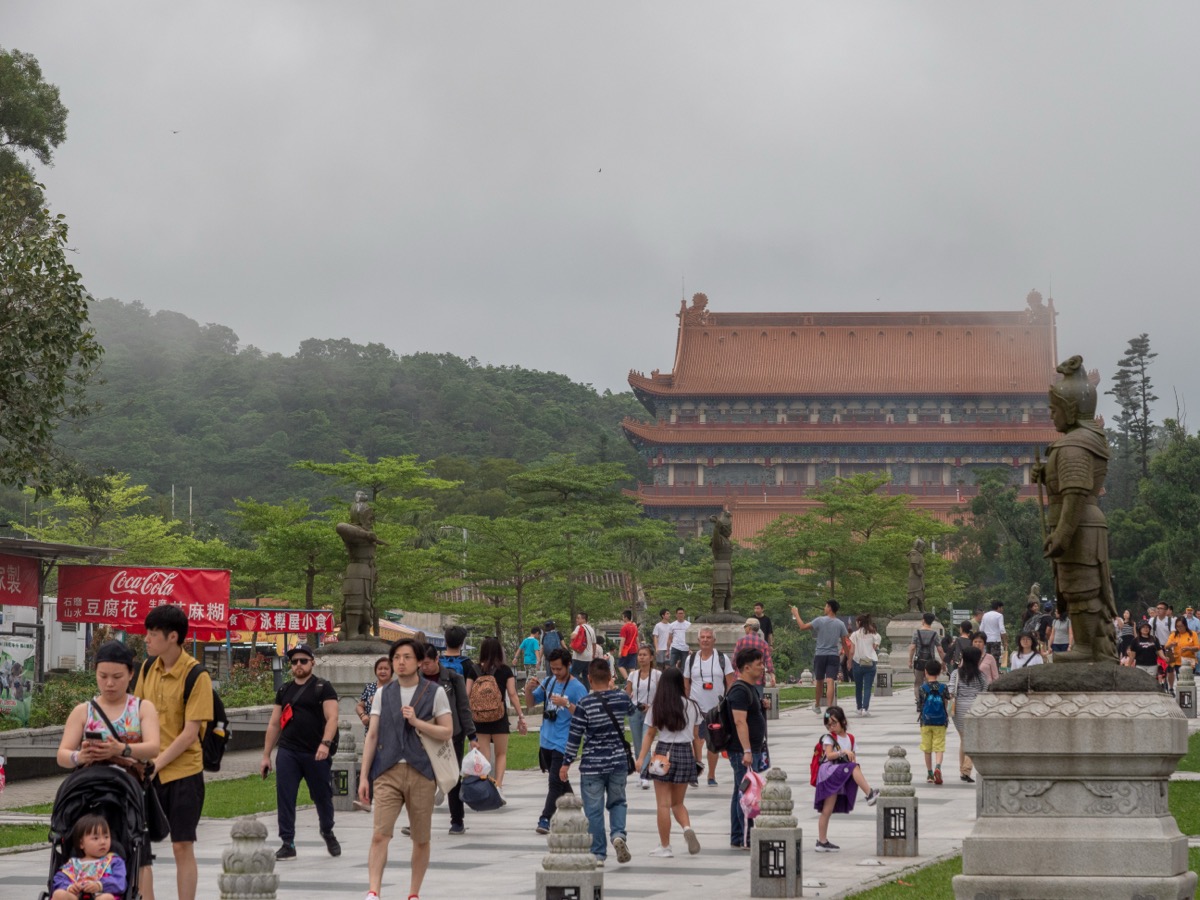An Island Apart in Hong Kong
Lantau (大嶼山, Tai Yu Shan) is the largest island in the Hong Kong territory, but also one of the least densely populated. Located west of the main island, it combines natural landscapes, spiritual traditions, and modern infrastructure.
Long considered a rural refuge, it has seen significant development since the 1990s, notably with the opening of Chek Lap Kok International Airport and the Tsing Ma Bridge.
Po Lin Monastery and the Giant Buddha
At the heart of Lantau lies one of Hong Kong’s most famous spiritual sites: the Po Lin Monastery (寶蓮禪寺), founded in 1906. It is best known for housing:
- The Tian Tan Buddha (Big Buddha), a 34-meter tall bronze statue inaugurated in 1993.
- A large circular terrace accessed by 268 steps.
- Richly decorated buildings, prayer halls, and statues of Buddhist deities.
It is an important pilgrimage site, but also a popular tourist destination.
Ngong Ping 360: A Spectacular Access
The Po Lin site is accessible via the Ngong Ping 360 cable car, connecting Tung Chung to Ngong Ping in about twenty minutes:
- Panoramic cabins flying over mountains, sea, and forest.
- Impressive views of the Giant Buddha upon arrival.
- An alternative is a hike via the Ngong Ping Trail.
The journey itself is a unique visual experience, blending nature and infrastructure.
Nature and Hiking
Lantau is also a paradise for outdoor enthusiasts. Here you will find:
- The Lantau Trail, a 70 km loop around the island.
- Lantau Peak (934 m), the second highest summit in Hong Kong.
- Sunset Peak, famous for spectacular sunrise and sunset views.
- Cheung Sha Beach, a long, still-preserved sandy stretch.
- Tai O, a fishing village on stilts, renowned for its traditional houses and peaceful atmosphere.
The landscapes vary: mountain ridges, forests, secluded valleys, beaches, and coastal villages.
An Island in Transition
While Lantau still symbolizes nature and spirituality, it faces growing pressure from development projects:
- Third runway at the airport,
- Hong Kong-Zhuhai-Macao Bridge,
- Coastal urbanization plans.
These projects fuel debate on environmental preservation and island identity.
Conclusion
Lantau balances tradition and transformation. It offers both the silence of temples, the murmur of waves, pilgrims’ fervor, and signs of an urbanizing future. It is an island to explore slowly, listen to, and contemplate — a different Hong Kong, more reflective yet equally vibrant.
Tung Chung
Hong Kong-Zhuhai-Macao Bridge
The Tian Tan Buddha
The Tian Tan Buddha, or Big Buddha, is a huge seated bronze Buddha statue located on Lantau Island. It stands 34 meters tall and weighs about 250 tons.
It represents Buddha Shakyamuni.
Shakyamuni, literally “sage of the Shakya clan,” is the honorific name given to Siddhartha Gautama, the founder of Buddhism. Born in the 5th century BCE in a region now divided between India and Nepal, he abandoned his princely life to seek answers to human suffering.
After years of spiritual quest, he attained Enlightenment (or nirvāṇa) under the Bodhi tree, becoming the Buddha, meaning “the Awakened One.” He then devoted his life to teaching the path to liberation, founding a community of disciples and transmitting Buddhism’s fundamental principles: the Four Noble Truths and the Noble Eightfold Path.
His teaching spread across Asia, spawning many Buddhist schools, centered on wisdom, ethics, and meditation practice.
Po Lin Monastery
The Po Lin Monastery (寶蓮禪寺), “Precious Lotus,” is one of the most important Buddhist monasteries in Hong Kong.
It was founded in 1906 by monks from Jiangsu province in China.
